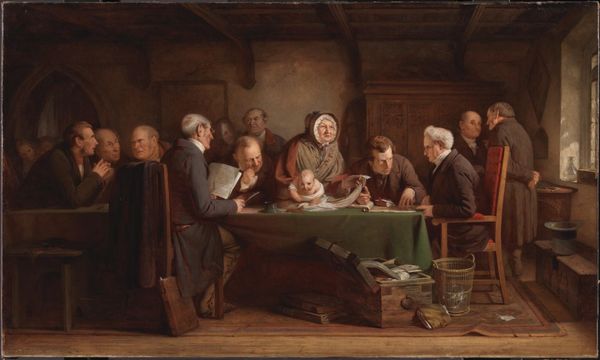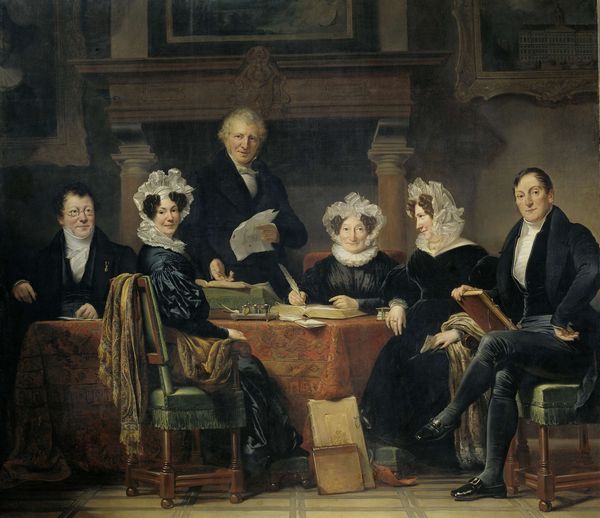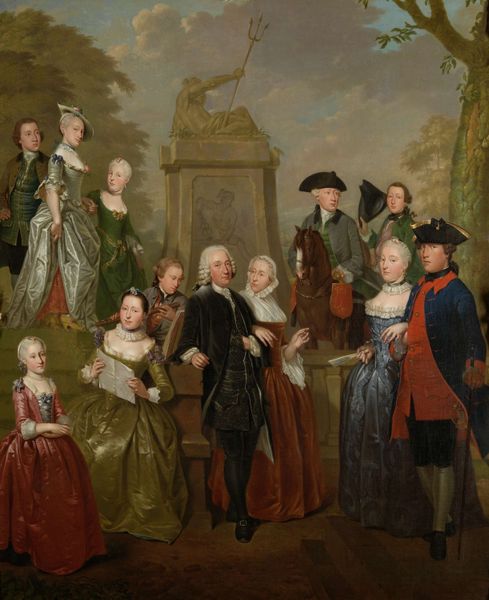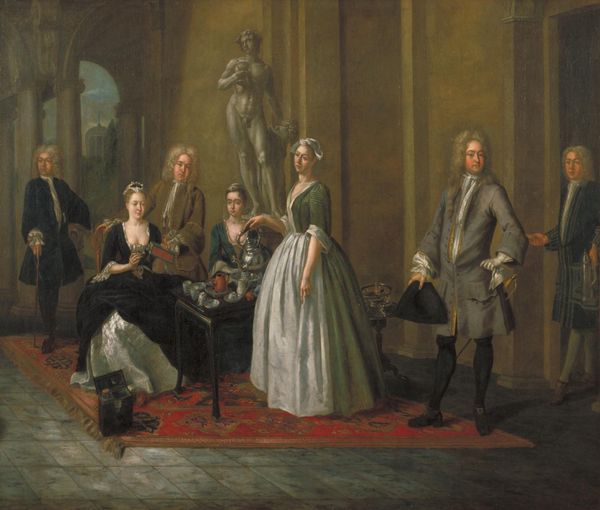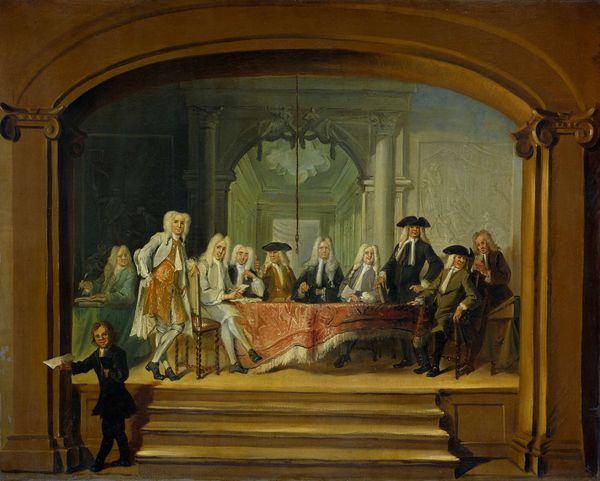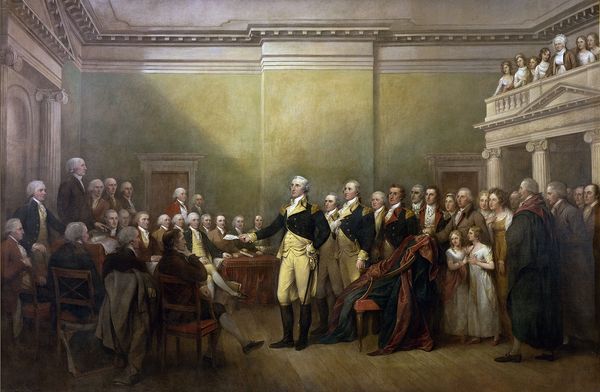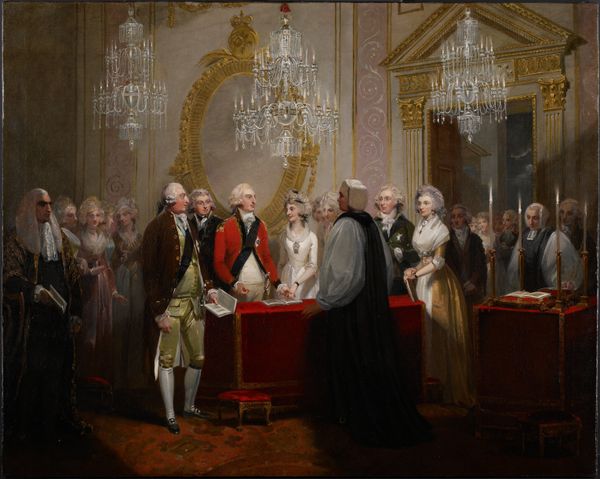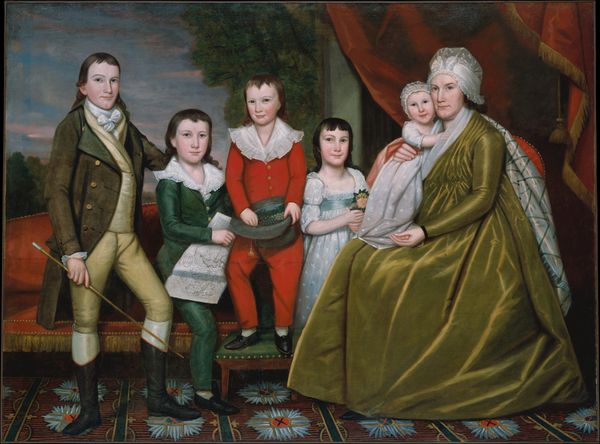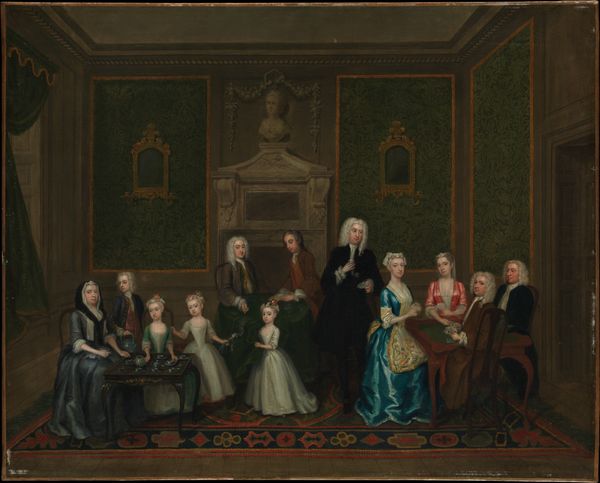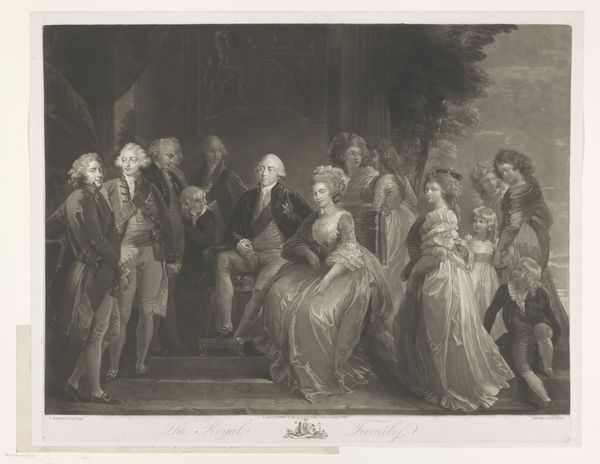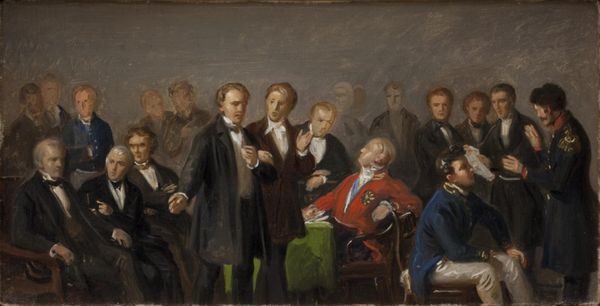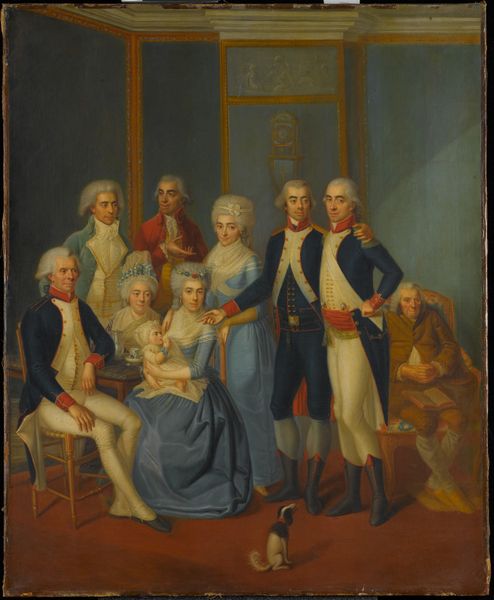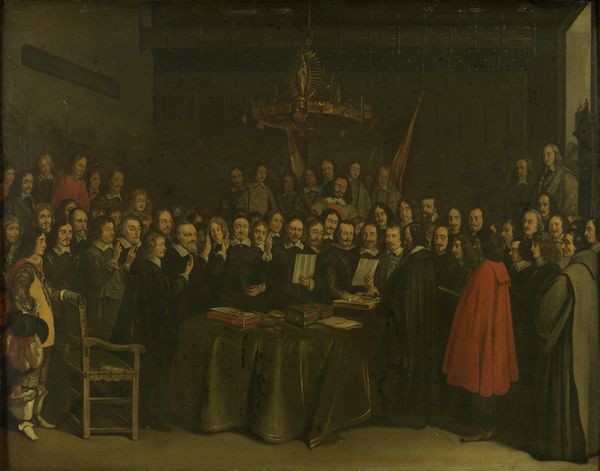
Dimensions: 630 x 838 cm
Copyright: Public domain
Curator: Well, I find myself drawn into a world of shadows and whispers in Goya's 1784 oil painting, "The Family of the Infante Don Luis." Editor: Goya, right? First impression, it's almost theatrically dark. Everyone's got a secret. Like a stage lit only by that tiny, defiant candle. I half expect a murder mystery to unfold. Curator: That dramatic lighting is part of Goya's signature, perfectly capturing the rather unconventional lifestyle of the Infante, who was living in exile from the Spanish court after marrying beneath his station. We have here the exiled royalty living a life amongst commoners, including artists, musicians, and other people outside of the royal sphere. Editor: Exile, eh? Makes sense. There’s a sort of melancholy hanging in the air. But look closer – the artist seems to have snuck himself into the scene, like a mischievous documentarian. And what is up with the baby holding on tight? It’s the epitome of a baroque family drama! Curator: Precisely. Goya's presence challenges traditional court portraiture. It wasn't about idealization. Instead, Goya included himself in the scene – observing and commenting. Editor: Very sneaky, Goya. Almost like he knew this family portrait would spill all their secrets centuries later. This reminds me a little of Las Meninas by Velazquez with this family surrounded by shadowy bystanders... I find myself wondering, were they really this dysfunctional? Did they like each other? Curator: While that's hard to say, the arrangement emphasizes status while subtly highlighting the unconventional relationships, especially how their life deviated from prescribed roles of the court. That is perhaps what Goya was trying to depict, this intersection of nobility, family life and social transgression, but framed, still, within painterly convention. Editor: I see what you mean... In the end, though, it's that flickering candlelight that gets me. Like hope clinging on for dear life. This isn’t just history, this is an enduring commentary on human drama, wouldn't you agree? Curator: Absolutely, it gives a lens to examine court structures of the era through both social and interpersonal complexities. It’s as poignant today as it must have been then.
Comments
No comments
Be the first to comment and join the conversation on the ultimate creative platform.
